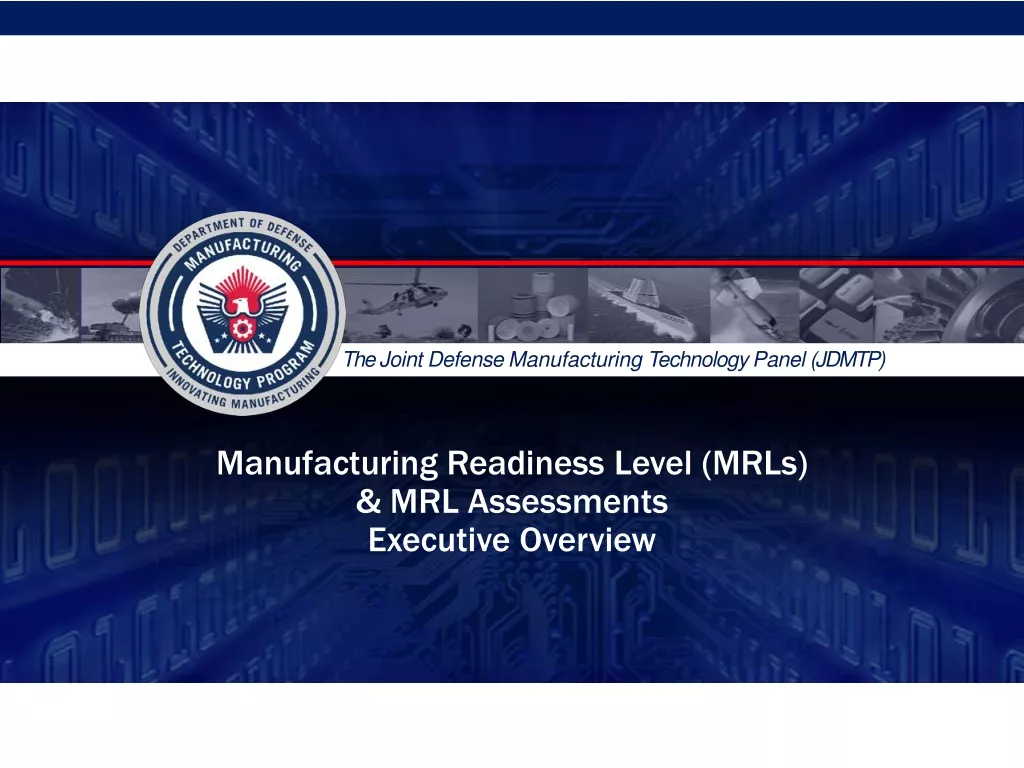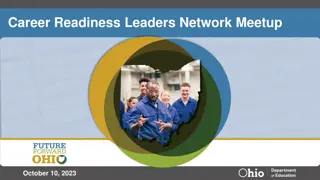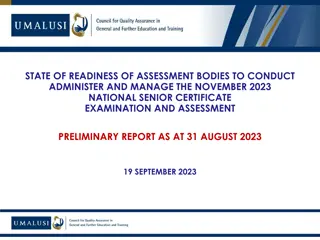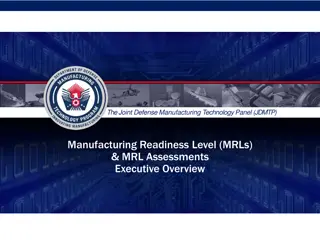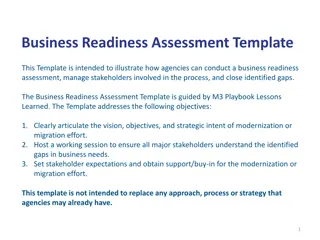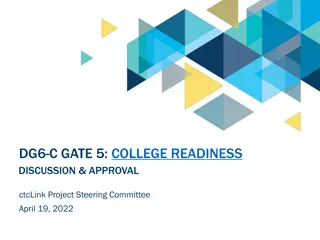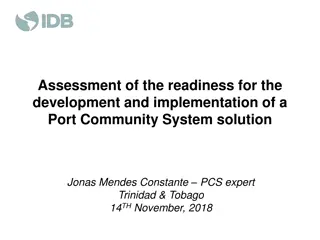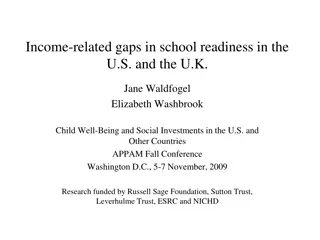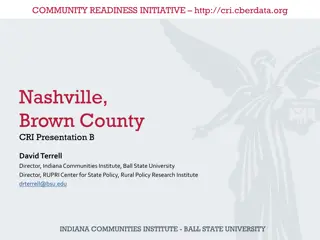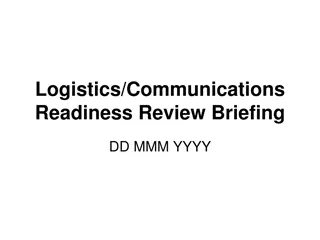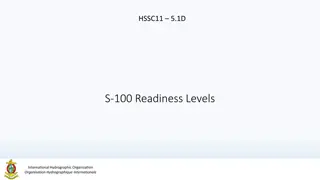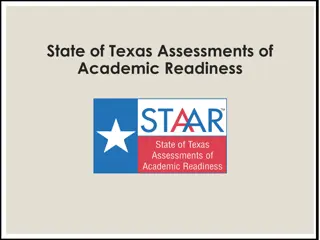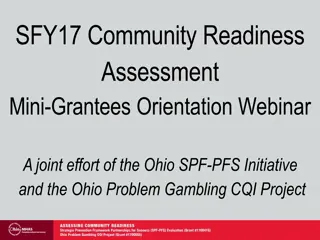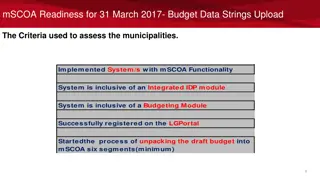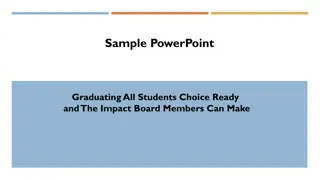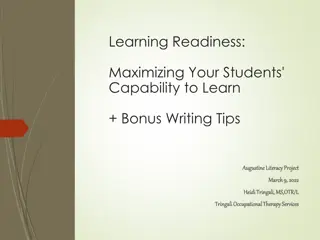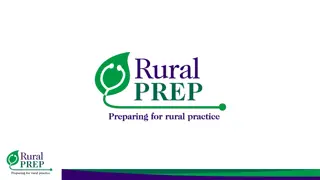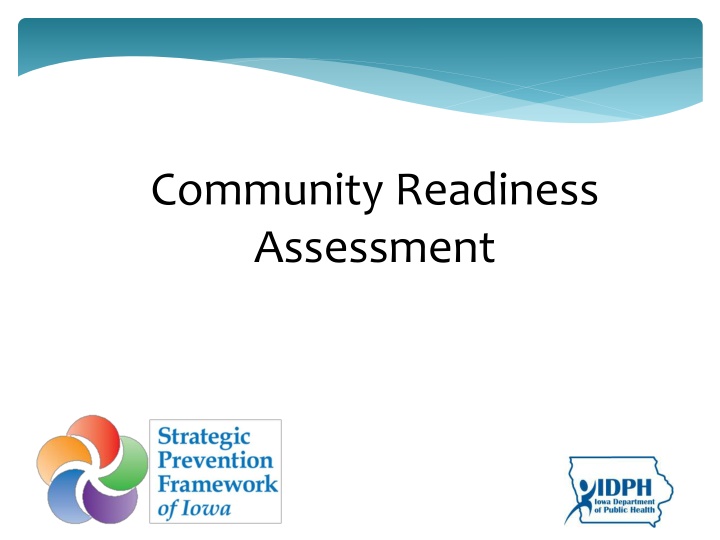
Community Readiness Assessment and Strategies
"Learn about the importance of assessing community readiness, the Tri-Ethnic Community Readiness Model, dimensions and stages of readiness, key steps in readiness assessment, and involving key respondents for successful community change efforts."
Download Presentation

Please find below an Image/Link to download the presentation.
The content on the website is provided AS IS for your information and personal use only. It may not be sold, licensed, or shared on other websites without obtaining consent from the author. If you encounter any issues during the download, it is possible that the publisher has removed the file from their server.
You are allowed to download the files provided on this website for personal or commercial use, subject to the condition that they are used lawfully. All files are the property of their respective owners.
The content on the website is provided AS IS for your information and personal use only. It may not be sold, licensed, or shared on other websites without obtaining consent from the author.
E N D
Presentation Transcript
Community Readiness Assessment
Assessing Community Readiness Readiness is the degree to which a community is prepared to take action on an issue. It is an essential piece in creating community change
The Tri-Ethnic Community Readiness Model Tri-Ethnic Center for Prevention Research Sage Hall, Colorado State University www.TriEthnicCenter.ColoState.edu Barbara A. Plested Ruth W. Edwards Pamela Jumper-Thurman
Community Readiness oAssessing community readiness for change oIncreasing community capacity oCreating a climate that makes change possible
Dimensions of Readiness A. Community Efforts B. Community Knowledge of the Efforts C. Leadership D. Community Climate E. Community Knowledge about the Issue F. Resources Related to the Issue
Stages of Readiness 7. Stabilization 8. Confirmation/Expansion 9. High Level of Community Ownership 6. Initiation 5. Preparation 4. Preplanning 3. Vague Awareness 2. Denial 1. No Awareness
Define Community Conduct Key Respondent Interviews Score to determine readiness level Develop readiness strategies COMMUNITY CHANGE!
Assessing Readiness oIdentify Key Respondents oConduct Interviews oScore Interviews oInterpret, Report and Share Results
Who is interviewed? Minimum of 6 individuals, 26 questions, 30-60 minute interviews Schools/ Universities Social Services Spiritual/ Religious City/County Government Health/Medical Professionals Mental Health Services Law Enforcement/ Probation Youth Community At Large
Cultural Competence and Assessment oInvolving representatives across sectors oCollecting Information in Appropriate Ways oLooking in your own backyard
Conduct Key Respondent Interviews oThings to consider: oWho will conduct them oWhere/how will they be conducted oHow will answers be captured
Scoring oIdentify two scorers oEach works independently to score dimensions oThen meet to reach consensus on scores oCalculate overall stage of readiness oHighlight impressions, unique outcomes and qualifying statements
Matching Strategies to Readiness oUsing this model to meet the community where they are at oFinding a place to start oWhose readiness do we need to raise?
Goals and Strategies for Each Stage o1. No Awareness oGoal: Begin to raise awareness of the issue o2. Denial/Resistance oGoal: Raise awareness that the problem or issue exists in this community. o3. Vague Awareness oGoal: Raise awareness that the community can do something
Goals and Strategies for Each Stage o4. Preplanning oGoal: Raise awareness with concrete ideas o5. Preparation oGoal: Gather existing information with which to plan more specific strategies o6. Initiation oGoal: Provide community specific information
Goals and Strategies for Each Stage o7. Stabilization oGoal: Stabilize efforts and programs o8. Confirmation oGoal: Enhance and expand services o9. High Level of Community Ownership oGoal: Maintain momentum and continue growth
Additional Resources www.iowaspfsig.org SPF Resources Assessment Assessment Deliverables
Discussion What does readiness mean to you? How could this tool benefit your project? What resources would you need to carry out a community readiness assessment? What will your next step be?
This project is funded by Iowa Department of Public Health, through the Substance Abuse and Mental Health Services Administration (SAMHSA) of the U.S. Department of Health and Human Services.

